|
Cardiovascular Laboratory |
ECG> Setup |
| |
Practical Points
To ensure that the recording technique is uniform and to reduce the
number of variables influencing the tracing, the following points must
be kept in mind:
- there must be effective contact
between electrode and skin
- the subject
should lie flat on their back; lying on side or sitting up alters the
heart's electrical axis.
|
| |
|
Equipment |
- The ECG signal will be recorded through the
PowerLab data acquisition system, which contains an isolated
input amplifier (BioAmp). A five-lead patient cable is connected to
the input of the BioAmp. Here, only three leads will be used.
|
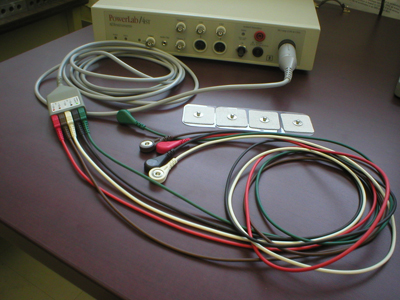 |
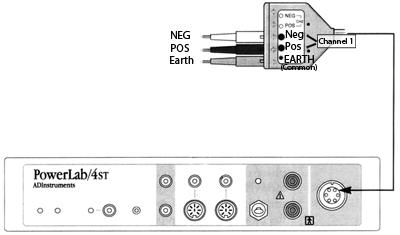 |
- Four disposable electrodes and alcohol pads are also required.
|
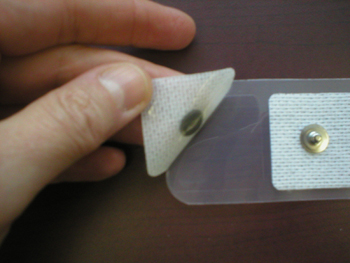 |
|
|
Procedure |
- The subject should lie flat on his/her back on a bench or cot,
with hands at their sides.
|
- The inner aspect of the right forearm just above the wrist is
rubbed briskly with alcohol.
|
|
|
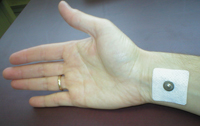 |
|
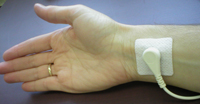 |
|
|
|
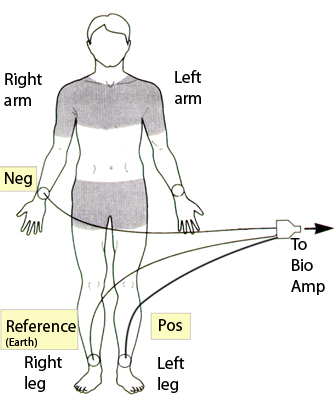 |
Depending on the lead
orientation, the appropriate leads of the patient cable are snapped
on the electrodes. For example, the following connections are made
in order to record from Lead II:
- NEG (white plug)
to the right arm
- POS
(black plug) to the left leg
- Earth (green
plug, Common or reference) to
the right leg
|
| |
|
|
The
Three Standard Bipolar Limb Leads |
| The LL electrode is taken to the + terminal of the
BioAmp, and
the RA electrode is taken to the - terminal of the BioAmp. Thus the output called
Lead II is
the difference in the potentials appearing on the left leg and the right arm: |
| Lead
II = (VLL
- VRL) - (VRA - VRL) = VLL - VRA |
Remember that the
potential measured at the right leg (VRL) is used as the reference
potential.
The connections for all three standard limb
leads are shown to the left below. The figure to the right shows a diagrammatic
representation of the
Einthoven Triangle Hypothesis. Willem Einthoven (1860-1927)
attempted to explain the principles of the ECG in scientific terms. In Einthoven's
triangle, the heart may be considered to lie at the centre of an equilateral triangle and
the corners of the triangles are the effective sensing points - the right arm, left arm
and left leg electrodes. |
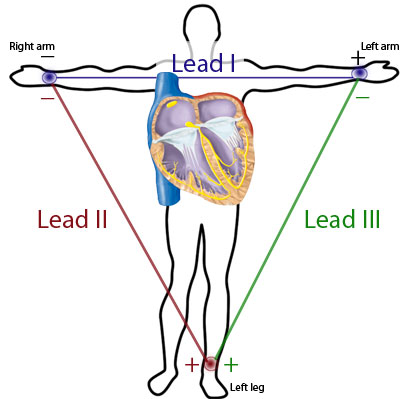 |
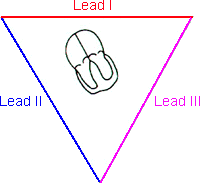
Einthoven's
Triangle |
Lead I
= (VLA - VRL) - (VRA - VRL) =
VLA - VRA
Lead II = (VLL
- VRL) - (VRA - VRL) = VLL - VRA
Lead III = (VLL
- VRL) - (VLA - VRL) = VLL - VLA |
|
|
To continue with the next section:
ECG Basics, click here |